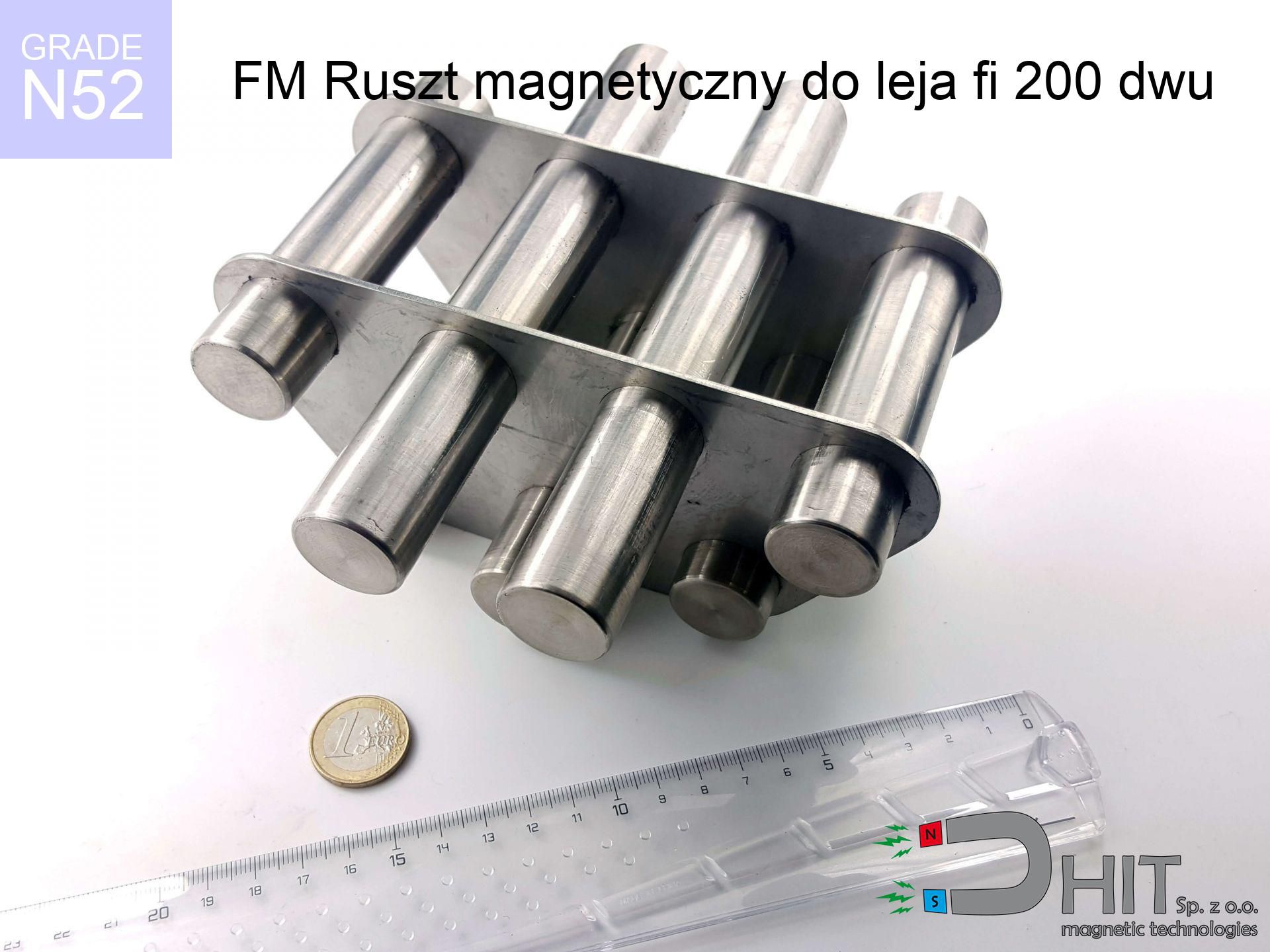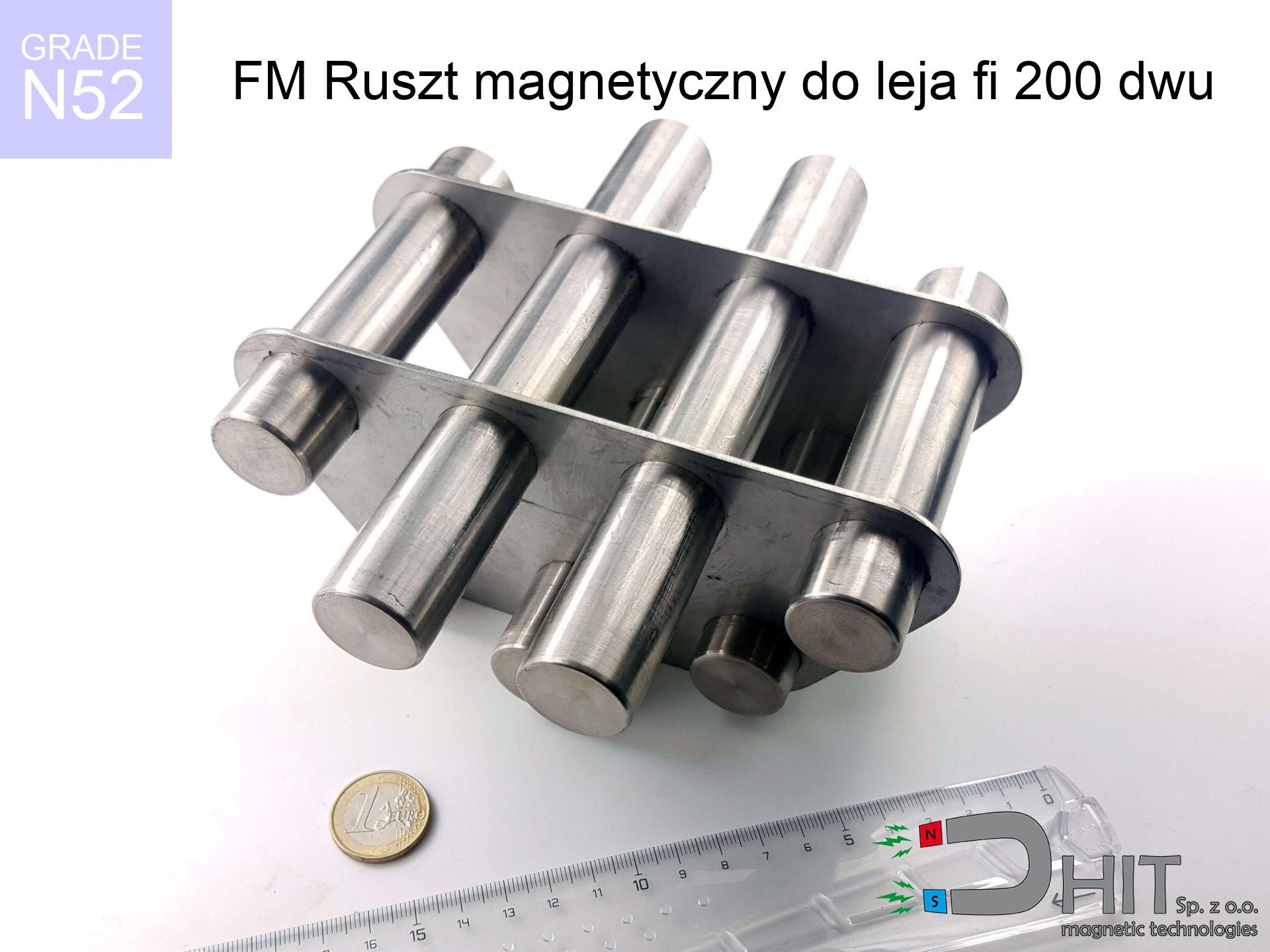FM Ruszt magnetyczny do leja fi 200 dwupoziomowy / N52 - magnetic filter
magnetic filter
Catalog no 110456
GTIN/EAN: 5906301812654
Weight
3500 g
Coating
[NiCuNi] Nickel
4458.75 ZŁ with VAT / pcs + price for transport
3625.00 ZŁ net + 23% VAT / pcs
bulk discounts:
Need more?
Give us a call
+48 22 499 98 98
otherwise let us know by means of
our online form
our website.
Specifications and shape of neodymium magnets can be reviewed on our
magnetic mass calculator.
Order by 14:00 and we’ll ship today!
Technical details - FM Ruszt magnetyczny do leja fi 200 dwupoziomowy / N52 - magnetic filter
Specification / characteristics - FM Ruszt magnetyczny do leja fi 200 dwupoziomowy / N52 - magnetic filter
| properties | values |
|---|---|
| Cat. no. | 110456 |
| GTIN/EAN | 5906301812654 |
| Production/Distribution | Dhit sp. z o.o. |
| Country of origin | Poland / China / Germany |
| Customs code | 85059029 |
| Weight | 3500 g |
| Coating | [NiCuNi] Nickel |
| Manufacturing Tolerance | ±1 mm |
Magnetic properties of material N52
| properties | values | units |
|---|---|---|
| remenance Br [min. - max.] ? | 14.2-14.7 | kGs |
| remenance Br [min. - max.] ? | 1420-1470 | mT |
| coercivity bHc ? | 10.8-12.5 | kOe |
| coercivity bHc ? | 860-995 | kA/m |
| actual internal force iHc | ≥ 12 | kOe |
| actual internal force iHc | ≥ 955 | kA/m |
| energy density [min. - max.] ? | 48-53 | BH max MGOe |
| energy density [min. - max.] ? | 380-422 | BH max KJ/m |
| max. temperature ? | ≤ 80 | °C |
Physical properties of sintered neodymium magnets Nd2Fe14B at 20°C
| properties | values | units |
|---|---|---|
| Vickers hardness | ≥550 | Hv |
| Density | ≥7.4 | g/cm3 |
| Curie Temperature TC | 312 - 380 | °C |
| Curie Temperature TF | 593 - 716 | °F |
| Specific resistance | 150 | μΩ⋅cm |
| Bending strength | 250 | MPa |
| Compressive strength | 1000~1100 | MPa |
| Thermal expansion parallel (∥) to orientation (M) | (3-4) x 10-6 | °C-1 |
| Thermal expansion perpendicular (⊥) to orientation (M) | -(1-3) x 10-6 | °C-1 |
| Young's modulus | 1.7 x 104 | kg/mm² |
Elemental analysis
| iron (Fe) | 64% – 68% |
| neodymium (Nd) | 29% – 32% |
| boron (B) | 1.1% – 1.2% |
| dysprosium (Dy) | 0.5% – 2.0% |
| coating (Ni-Cu-Ni) | < 0.05% |
Sustainability
| recyclability (EoL) | 100% |
| recycled raw materials | ~10% (pre-cons) |
| carbon footprint | low / zredukowany |
| waste code (EWC) | 16 02 16 |
See more proposals
Pros as well as cons of rare earth magnets.
Benefits
- They have unchanged lifting capacity, and over more than ten years their attraction force decreases symbolically – ~1% (according to theory),
- Neodymium magnets prove to be extremely resistant to loss of magnetic properties caused by external field sources,
- In other words, due to the shiny surface of gold, the element gains visual value,
- They show high magnetic induction at the operating surface, making them more effective,
- Through (adequate) combination of ingredients, they can achieve high thermal resistance, allowing for action at temperatures reaching 230°C and above...
- Due to the option of free shaping and customization to individualized solutions, magnetic components can be manufactured in a broad palette of geometric configurations, which amplifies use scope,
- Versatile presence in innovative solutions – they serve a role in computer drives, drive modules, precision medical tools, as well as other advanced devices.
- Compactness – despite small sizes they generate large force, making them ideal for precision applications
Weaknesses
- They are fragile upon heavy impacts. To avoid cracks, it is worth protecting magnets in a protective case. Such protection not only shields the magnet but also improves its resistance to damage
- We warn that neodymium magnets can lose their strength at high temperatures. To prevent this, we advise our specialized [AH] magnets, which work effectively even at 230°C.
- Due to the susceptibility of magnets to corrosion in a humid environment, we advise using waterproof magnets made of rubber, plastic or other material resistant to moisture, when using outdoors
- Limited ability of making nuts in the magnet and complicated shapes - preferred is a housing - magnetic holder.
- Potential hazard to health – tiny shards of magnets pose a threat, if swallowed, which becomes key in the context of child health protection. Furthermore, tiny parts of these products are able to be problematic in diagnostics medical after entering the body.
- Due to complex production process, their price is relatively high,
Holding force characteristics
Detachment force of the magnet in optimal conditions – what it depends on?
- using a base made of low-carbon steel, serving as a ideal flux conductor
- whose transverse dimension equals approx. 10 mm
- characterized by even structure
- without any air gap between the magnet and steel
- for force applied at a right angle (pull-off, not shear)
- at conditions approx. 20°C
Impact of factors on magnetic holding capacity in practice
- Clearance – existence of any layer (paint, dirt, air) interrupts the magnetic circuit, which reduces power rapidly (even by 50% at 0.5 mm).
- Force direction – note that the magnet holds strongest perpendicularly. Under sliding down, the capacity drops drastically, often to levels of 20-30% of the nominal value.
- Plate thickness – insufficiently thick steel does not accept the full field, causing part of the flux to be lost to the other side.
- Metal type – different alloys attracts identically. High carbon content worsen the attraction effect.
- Smoothness – ideal contact is obtained only on polished steel. Any scratches and bumps create air cushions, weakening the magnet.
- Temperature – temperature increase results in weakening of induction. Check the thermal limit for a given model.
Holding force was measured on a smooth steel plate of 20 mm thickness, when the force acted perpendicularly, in contrast under attempts to slide the magnet the holding force is lower. Moreover, even a slight gap between the magnet and the plate reduces the lifting capacity.
H&S for magnets
Eye protection
Beware of splinters. Magnets can explode upon violent connection, launching shards into the air. Wear goggles.
Bone fractures
Watch your fingers. Two large magnets will join instantly with a force of massive weight, destroying everything in their path. Be careful!
Safe operation
Before use, read the rules. Uncontrolled attraction can break the magnet or hurt your hand. Think ahead.
Allergy Warning
Certain individuals suffer from a sensitization to nickel, which is the standard coating for neodymium magnets. Prolonged contact might lead to dermatitis. We recommend use safety gloves.
Permanent damage
Avoid heat. NdFeB magnets are susceptible to temperature. If you require resistance above 80°C, look for HT versions (H, SH, UH).
Life threat
Health Alert: Neodymium magnets can deactivate heart devices and defibrillators. Stay away if you have medical devices.
Safe distance
Data protection: Strong magnets can damage payment cards and sensitive devices (pacemakers, medical aids, mechanical watches).
Keep away from electronics
An intense magnetic field negatively affects the operation of magnetometers in smartphones and GPS navigation. Keep magnets near a smartphone to prevent damaging the sensors.
Do not give to children
These products are not suitable for play. Accidental ingestion of multiple magnets can lead to them attracting across intestines, which constitutes a direct threat to life and necessitates immediate surgery.
Dust is flammable
Dust produced during cutting of magnets is combustible. Do not drill into magnets unless you are an expert.






![UMP 75x25 [M10x3] GW F200 GOLD DUAL / N42 - search holder UMP 75x25 [M10x3] GW F200 GOLD DUAL / N42 - search holder](https://cdn3.dhit.pl/graphics/products/ump-75x25-m10x3-gw-f200-gold-dual-xoc.jpg)

